Locrio recipe, embark on a journey to the heart of Dominican cuisine with Locrio, a delightful and flavorful rice dish that captures the essence of the island’s culinary heritage. Rooted in a fusion of African, Indigenous, and European influences, Locrio is a testament to the rich tapestry of flavors found in Dominican Republic’s traditional cooking. In this exploration, we will delve into the recipe for Locrio, uncovering the essential ingredients, the meticulous preparation, and the cultural significance that make this dish a beloved part of Dominican culinary traditions.
Understanding Locrio: A Fusion of Cultures on a Plate:
Locrio is often considered the Dominican version of paella, but it stands on its own as a unique dish with distinct Dominican flavors. This one-pot rice creation reflects the fusion of culinary influences that have shaped the Dominican Republic over the centuries. Locrio typically features a protein—chicken, pork, or seafood—combined with rice and an array of aromatic herbs and spices. The result is a symphony of flavors and textures that mirrors the diverse cultural tapestry of the Dominican Republic.
Ingredients for Dominican Locrio:
Locrio is celebrated for its versatility, allowing for a variety of proteins and regional variations. Let’s explore the core components that contribute to the culinary brilliance of this Dominican dish.
For Chicken Locrio:
- Chicken: 2 pounds, cut into pieces. Traditionally, bone-in and skin-on pieces are used for enhanced flavor.
- Long-Grain Rice: 2 cups. Choose a high-quality long-grain rice for the best texture.
- Vegetable Oil: 1/4 cup. Used for sautéing and browning the chicken.
- Onion: 1 large, finely chopped. Adds sweetness and depth to the base of the dish.
- Bell Peppers (Red and Green): 1 each, finely chopped. Enhances color and flavor.
- Garlic: 4 cloves, minced. Infuses a rich and aromatic flavor.
- Tomato Paste: 2 tablespoons. Adds depth and color to the dish.
- Tomatoes: 2 medium-sized, diced. Provides a fresh and juicy element.
- Chicken Broth: 4 cups. Adds moisture and depth to the rice.
- Saffron Threads: A pinch (optional). Provides a subtle earthy flavor and a golden hue.
- Cilantro: 1/4 cup, chopped. Adds a burst of freshness.
For Seafood Locrio:
For those opting for a seafood variation, the protein and some ingredients may differ.
- Assorted Seafood: 1 pound (shrimp, squid, mussels, etc.). Cleaned and prepared.
- Long-Grain Rice: 2 cups.
- Vegetable Oil: 1/4 cup.
- Onion: 1 large, finely chopped.
- Bell Peppers (Red and Green): 1 each, finely chopped.
- Garlic: 4 cloves, minced.
- Tomato Paste: 2 tablespoons.
- Tomatoes: 2 medium-sized, diced.
- Fish or Seafood Stock: 4 cups. Enhances the seafood flavor.
- Paprika: 1 teaspoon. Adds a smoky depth.
- Saffron Threads: A pinch (optional).
- Cilantro: 1/4 cup, chopped.
Preparation: Crafting the Perfect Dominican Locrio:
Creating the perfect Locrio involves a sequence of steps, from preparing the protein to cooking the rice and assembling the dish. Let’s embark on the step-by-step journey to craft this Dominican culinary masterpiece.
Step 1: Prepare the Protein:
- Clean and Cut Chicken: If using chicken, clean and cut it into pieces. For enhanced flavor, bone-in and skin-on pieces are traditional.
- Season Chicken: Season the chicken with salt, pepper, and any additional spices you prefer. Allow it to marinate for at least 30 minutes to infuse the flavors.
For Seafood Locrio:
- Clean and Prepare Seafood: If opting for seafood, ensure it is cleaned and prepared. Season with salt and pepper.
Step 2: Sauté and Brown the Protein:
- Sauté Chicken: In a large, heavy-bottomed pot or caldero, heat vegetable oil over medium-high heat. Sauté the chicken pieces until they are golden brown on all sides. This step adds flavor and helps create a flavorful base for the rice.
For Seafood Locrio:
- Sauté Seafood: In the same pot, sauté the assorted seafood until they are partially cooked. Remove and set aside.
Step 3: Sauté Aromatics:
- Sauté Onion and Garlic: In the same pot, sauté the chopped onion and minced garlic until they become soft and aromatic.
- Add Bell Peppers: Add the finely chopped bell peppers to the pot and sauté until they are tender.
Step 4: Add Tomato Paste and Tomatoes:
- Incorporate Tomato Paste: Stir in the tomato paste, coating the aromatics for a rich and flavorful base.
- Add Diced Tomatoes: Add the diced tomatoes to the pot, allowing them to release their juices and create a savory mixture.
Step 5: Combine Protein and Rice:
- Combine Chicken (or Seafood): Return the sautéed chicken (or seafood) to the pot, ensuring it is well-coated with the aromatic mixture.
- Rinse Rice: Rinse the long-grain rice under cold water until the water runs clear. This step removes excess starch for a fluffier rice.
For Seafood Locrio:
- Add Partially Cooked Seafood: If preparing seafood Locrio, add the partially cooked seafood to the pot, ensuring it is evenly distributed.
Step 6: Add Liquid and Seasoning:
- Pour Chicken Broth (or Stock): Pour the chicken broth (or fish/seafood stock for seafood Locrio) into the pot, ensuring it covers the protein and rice.
- Season with Saffron (Optional): For a traditional touch and subtle earthy flavor, add a pinch of saffron threads to the pot.
Step 7: Simmer and Cook:
- Bring to a Boil: Bring the mixture to a boil over medium-high heat. Once boiling, reduce the heat to low, cover the pot, and let it simmer.
- Cook Until Rice is Tender: Allow the Locrio to simmer until the rice is tender and has absorbed the flavors of the protein and aromatics. This typically takes around 20-25 minutes.
- Fluff Rice: Once cooked, fluff the rice with a fork to separate the grains.
Step 8: Garnish with Cilantro:
- Sprinkle Chopped Cilantro: Just before serving, sprinkle the chopped cilantro over the Locrio. This adds a burst of freshness and color.
Tips for Perfect Dominican Locrio:
- Proper Marination (For Chicken Locrio):
- Enhanced Flavor: Allow the chicken to marinate for at least 30 minutes with salt, pepper, and any preferred spices. This enhances the flavor of the protein.
- Sautéing for Flavorful Base:
- Golden Brown Chicken: When sautéing the chicken (or seafood), aim for golden brown color on all sides. This step adds depth to the flavor profile.
- Rinsing Rice:
- Fluffier Texture: Rinse the long-grain rice under cold water until it runs clear. This removes excess starch and contributes to a fluffier texture.
- Saffron for Authenticity (Optional):
- Traditional Touch: Adding a pinch of saffron threads to the pot provides a traditional touch and a subtle earthy flavor.
- Even Distribution of Ingredients:
- Balanced Bites: Ensure the protein, rice, and aromatics are evenly distributed in the pot for a balanced and flavorful bite.
- Monitoring Simmering Time:
- Tender Rice: Keep an eye on the simmering time to ensure the rice is tender but not overcooked. The ideal cooking time is around 20-25 minutes.
- Fluffing Rice with a Fork:
- Separate Grains: After cooking, fluff the rice with a fork to separate the grains. This step adds to the light and fluffy texture of the Locrio.
- Garnishing with Cilantro:
- Freshness at the End: Sprinkle chopped cilantro just before serving to preserve its vibrant color and add a burst of freshness to the dish.
Conclusion: Savoring the Dominican Republic with Locrio:
In conclusion, Locrio invites you to savor the rich tapestry of Dominican culinary heritage—a fusion of flavors, textures, and cultural influences. From the golden-brown chicken or seafood to the aromatic herbs and spices, each spoonful of Locrio is a journey through the diverse culinary landscape of the Dominican Republic.
As you embark on your own culinary adventure to create Locrio, relish in the marination process, the sautéing of aromatics, and the joy of serving a dish that encapsulates the warmth of shared meals and the cultural richness of the Dominican Republic. Whether enjoyed with family or friends, Locrio brings the spirit of Dominican hospitality to your table. So, gather your ingredients, immerse yourself in the delightful experience of crafting and savoring a plate of Locrio—one that captures the essence of Dominican culinary excellence.


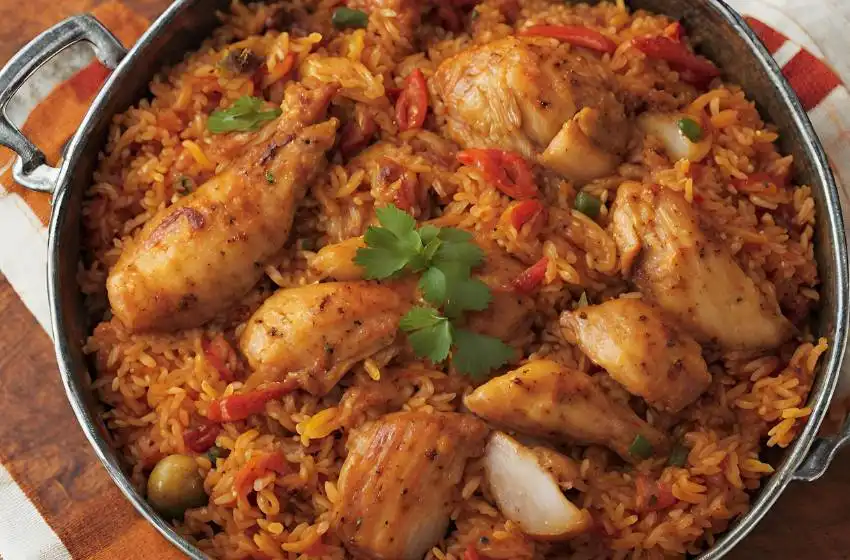
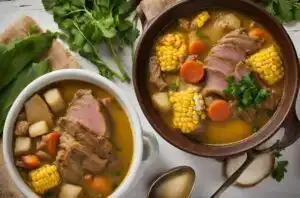
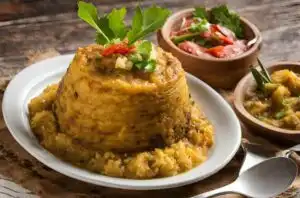

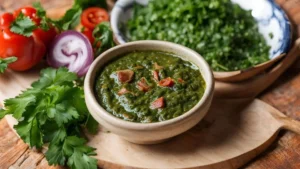
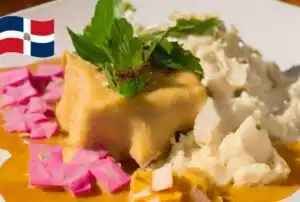





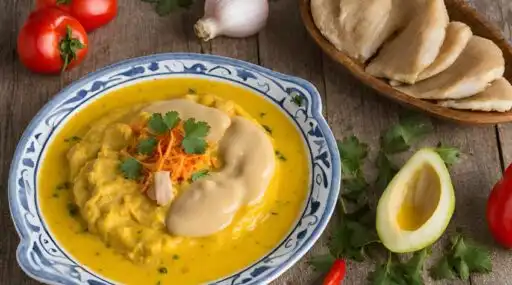



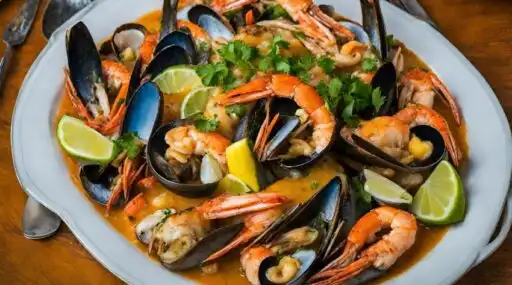


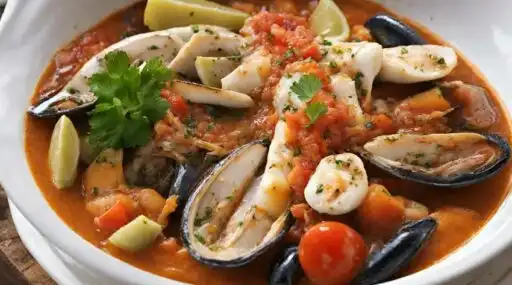




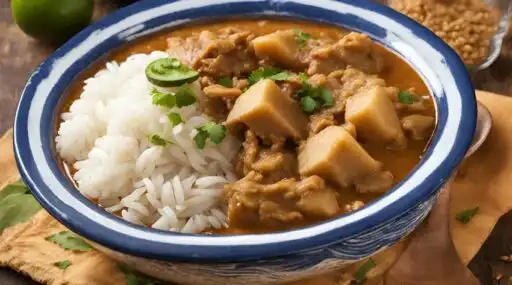


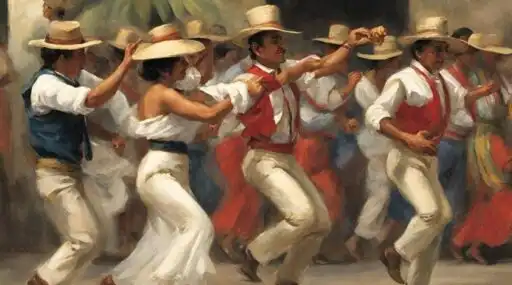

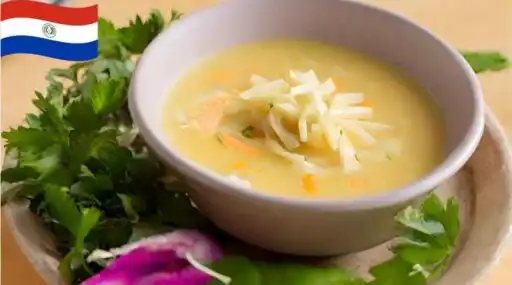







Leave a Reply